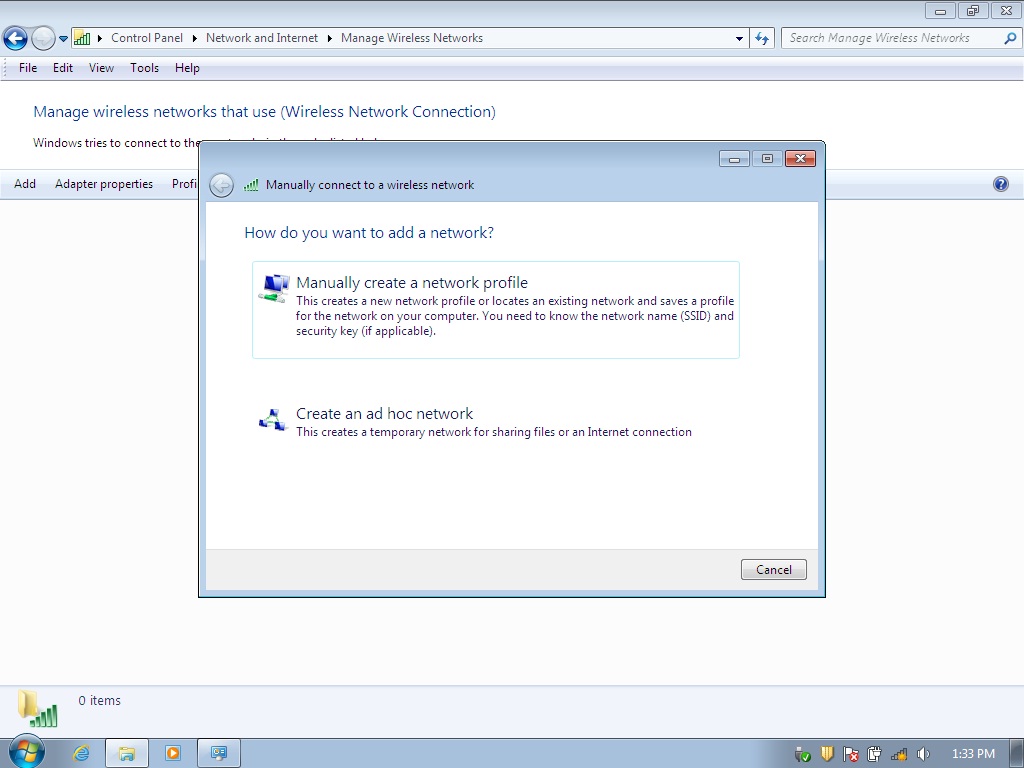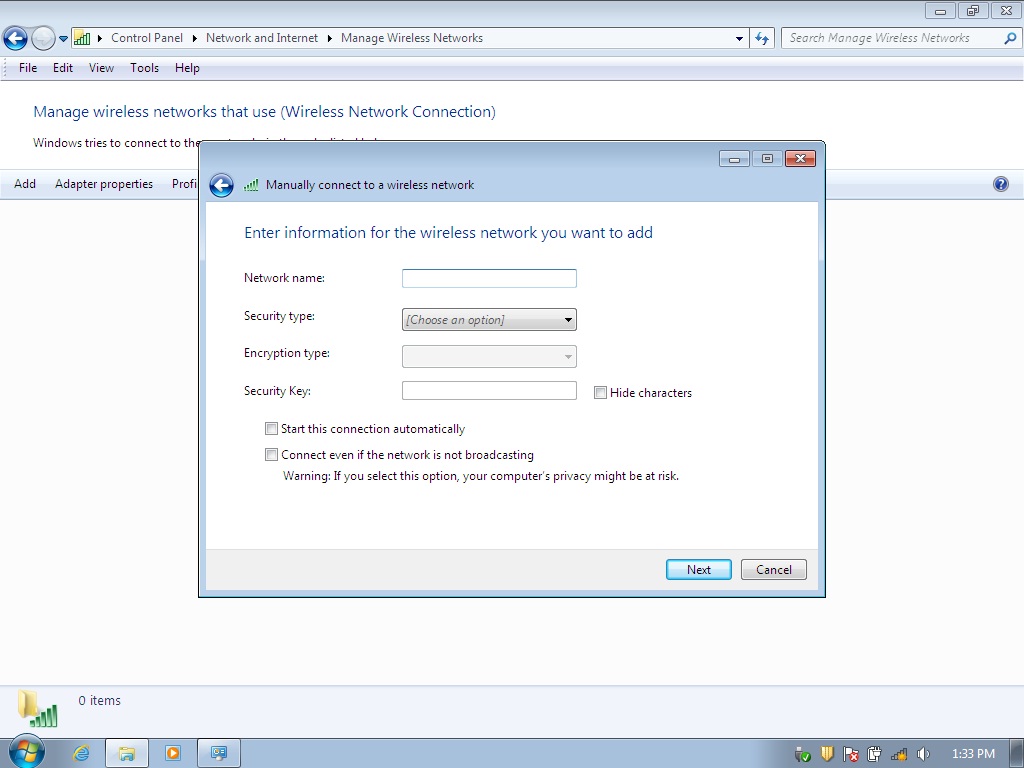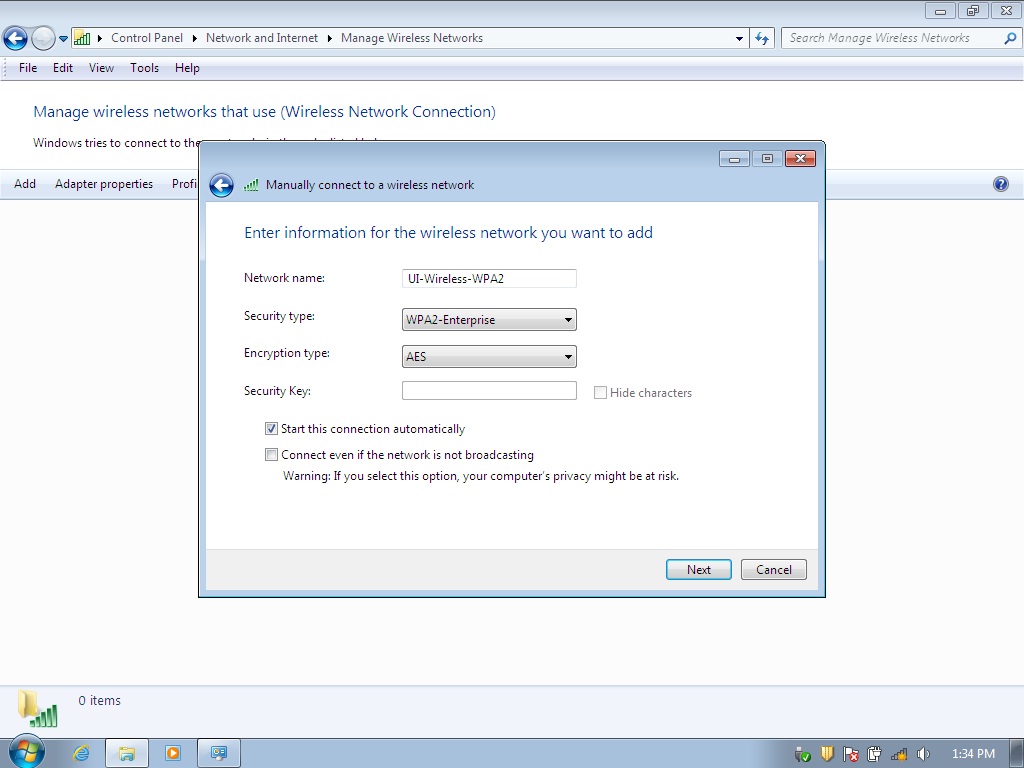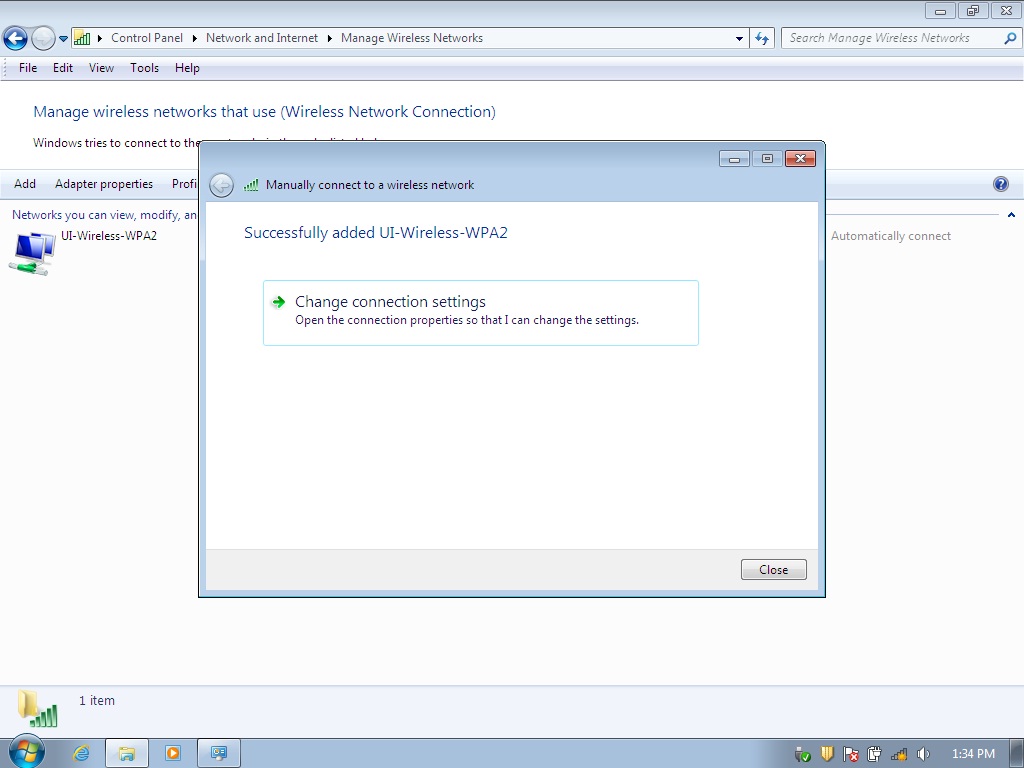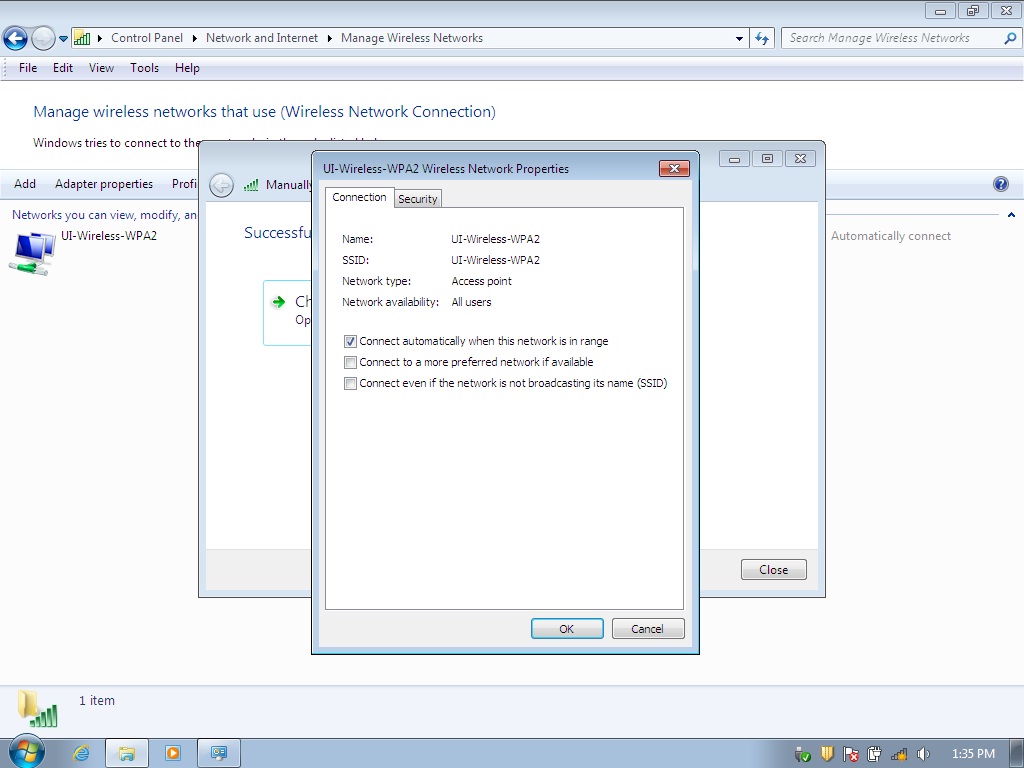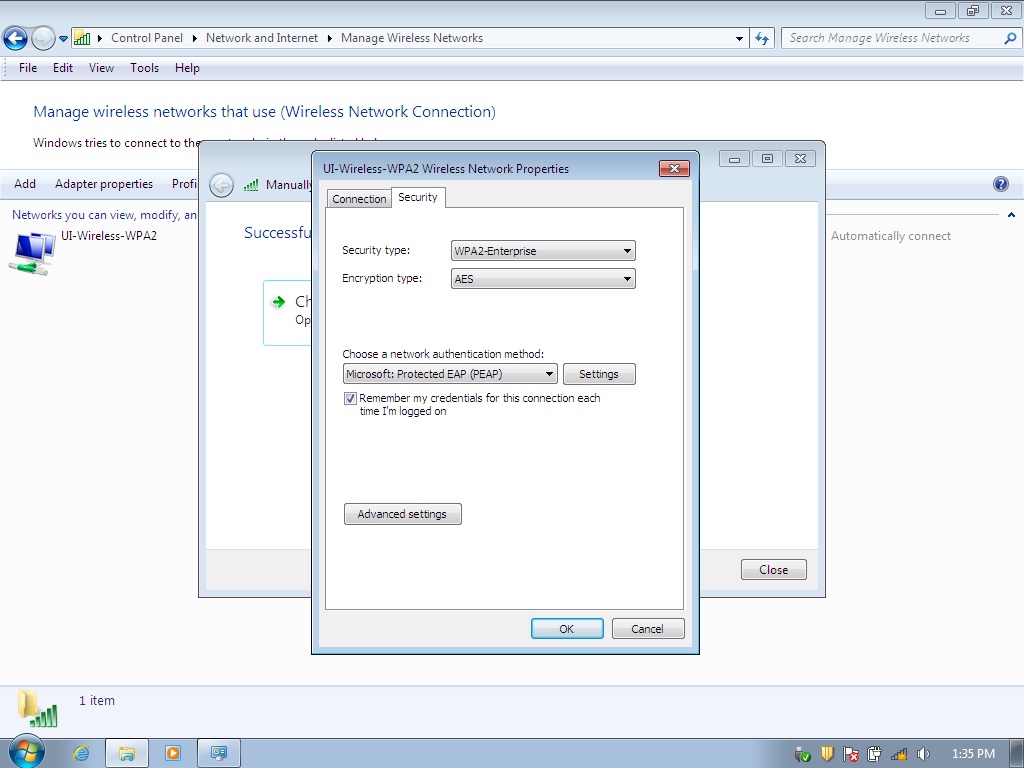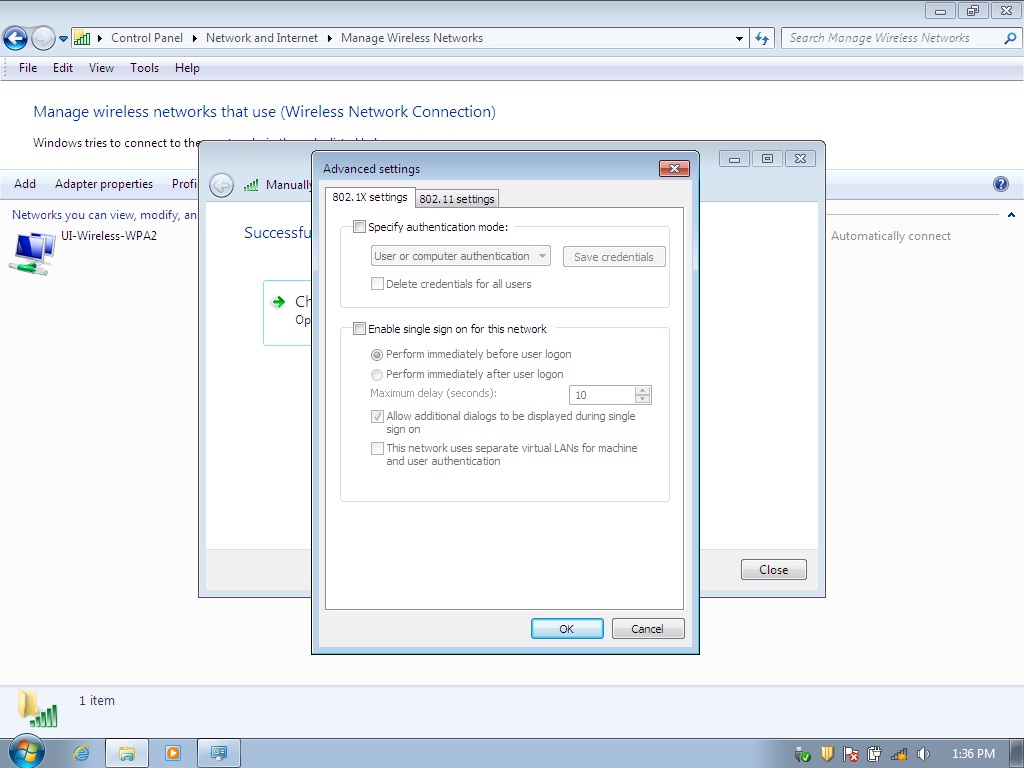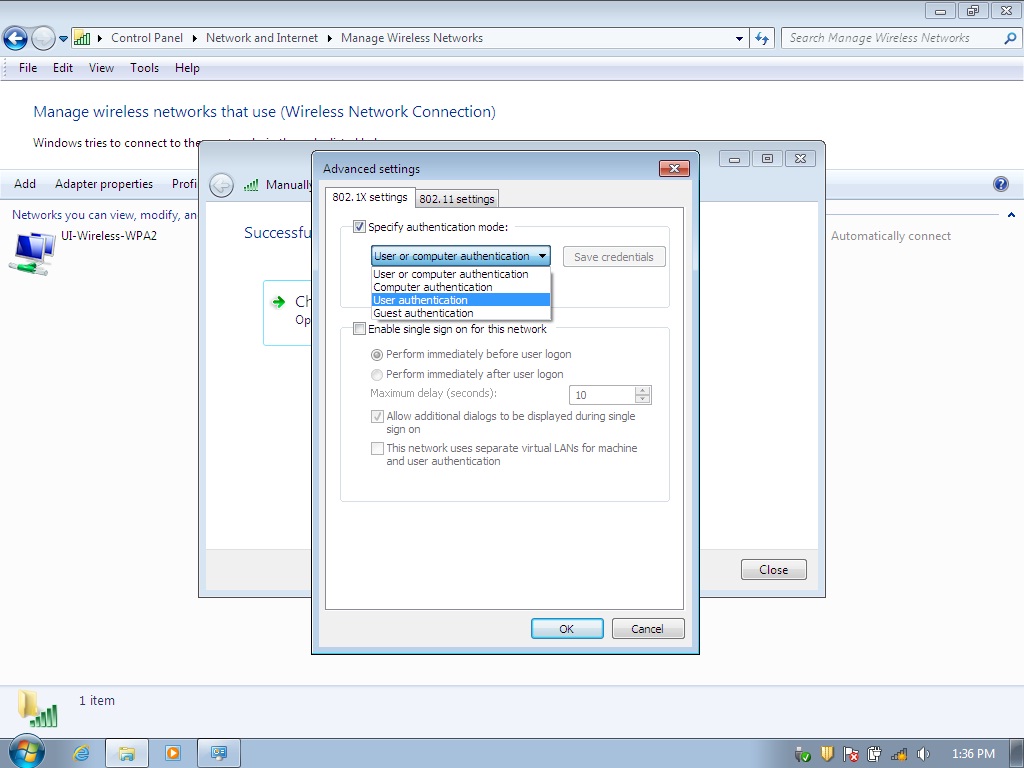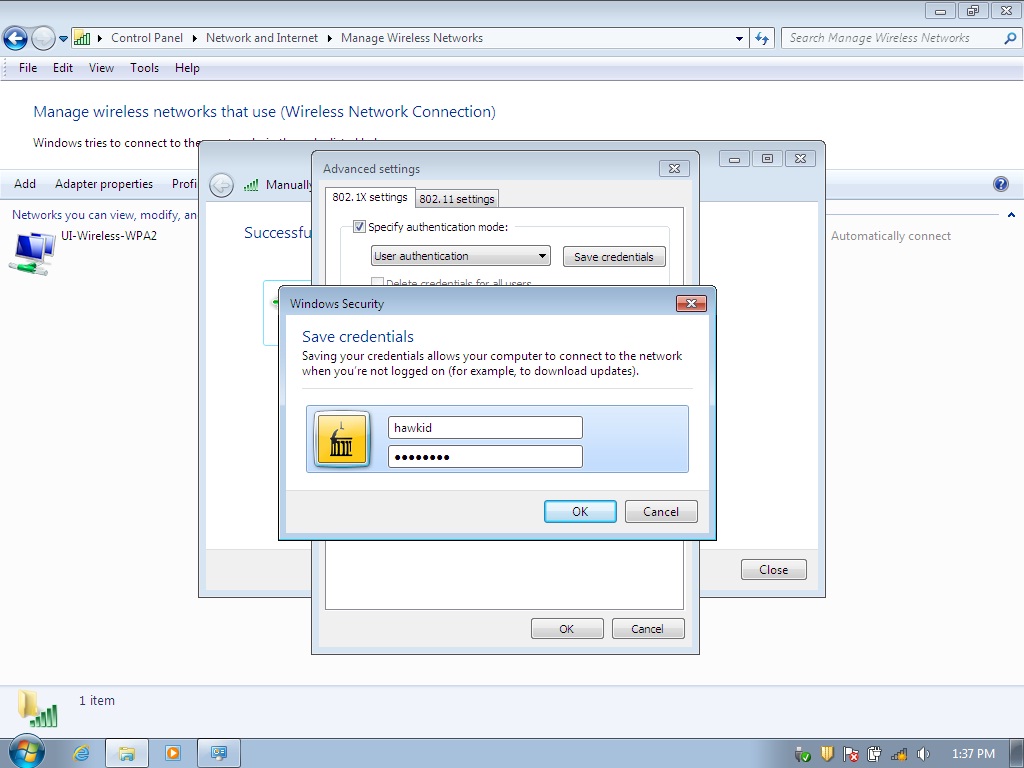Technology | Education | University of Iowa
 Summary. This document provides manual setup instructions for WPA2 Enterprise Wireless with Windows 7.
Summary. This document provides manual setup instructions for WPA2 Enterprise Wireless with Windows 7.
Your company or institution may provide you with an automated setup procedure to configure WPA2 Enterprise wireless. If so, try that method first. This usually involves selecting a local wireless network with setup in the name and then going to an Internet browser for further instructions. If the automated setup doesn’t work, you might try the instructions below.
The example below is based on the University of Iowa wireless network, but these steps should work for any WPA2 Enterprise network.
The screen below is an example of what might go wrong during an automated setup. You may get a message stating, “Wireless Utility Conflict.” The error described below could be the result third-party software being installed (such as software provided with a USB wireless card). However, it could also show up on a relatively clean and newly imaged computer. If you’ve tried to resolve automated setup problems, but can’t, then continue to the steps below. Click on any of the images to enlarge them.
WPA 2 Enterprise Wireless Manual Setup
1. From the Windows Control Panel, choose Network and Internet and then choose Network and Sharing Center (a link to this is also found by clicking on the network icon in the system tray). In the left column, click on the link for Manage Wireless Networks. The screen below will appear. If networks are listed, they are not necessarily networks currently available. The network connections listed are actually profiles (login information) for various networks that you may have connected to.

2. Click on Add from the menu bar, and the screen below will appear.
3. Choose the option above to Manually create a network profile. The screen below will appear.
5. Fill in the Network name and choose WPA2 Enterprise as the security type. Below is an example using the settings for the University of Iowa wireless. On some older computers, the wireless networks may show up and then disappear from the list of available networks even though they are in range with a strong signal. In such cases, you can consider selecting the option to Connect even if the network is not broadcasting. However, this could compromise your computer’s privacy.
6. After providing the basic information shown above, click Next and the screen below will appear.
7. More information is needed to complete the setup, so click on the option shown above to Change connection settings. The following screen will show up.
8. It’s probably fine to leave the default settings shown above on the Connection tab. Click the Security tab to reveal the options shown below.
9. Click the Advanced settings button shown above to produce the screen below.
10. Place a checkmark in the box for Specify authentication mode. The other options below will then become clickable.
11. From the drop down menu, choose User authentication as shown above. Then click on the Save credentials button and provide your login user ID and password as shown below.
12. Click the OK button and keep clicking the OK buttons to confirm and close out of the various windows above. You will return to the Manage wireless networks screen shown below.
You may see a bubble message like the one shown above. Click on it and accept any additional authentication or certificate information. Sometimes you’ll get a fairly ominous warning when connecting, like the one shown below.
This may be fine, and you can probably click Connect. Check with your system administrator, help desk, or IT support person if you have any further questions or concerns.

